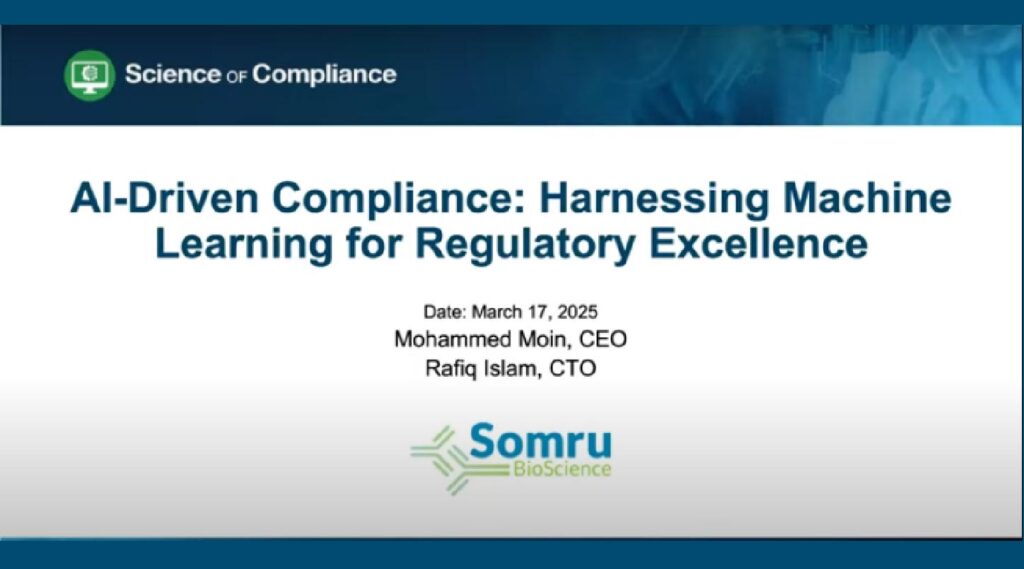Now Streaming On-Demand
The bioscience industry operates within a highly regulated environment, where adherence to compliance standards is critical for patient safety, product efficacy, and market approval. Regulatory bodies such as the FDA, EMA, and WHO enforce stringent guidelines covering drug development, clinical trials, manufacturing, and post-market surveillance. However, ensuring regulatory compliance has traditionally been a resource-intensive and time-consuming process, often prone to human error and inefficiencies.
Artificial Intelligence (AI) and machine learning (ML) are revolutionizing regulatory compliance by automating complex processes, enhancing accuracy, and enabling proactive risk management. By leveraging AI-driven solutions, bioscience organizations can streamline compliance workflows, optimize data analysis, and mitigate regulatory risks in real time.
Key Applications of AI in Regulatory Compliance
1. Automated Documentation and Reporting
Regulatory submissions require extensive documentation, from clinical trial data to pharmacovigilance reports. AI-powered Natural Language Processing (NLP) systems can automate the extraction, organization, and validation of compliance-related documents, reducing human workload and improving accuracy.
2. Intelligent Risk Assessment
Machine learning models analyze vast datasets to identify potential compliance risks. Predictive analytics can flag anomalies in clinical trial data, detect deviations in Good Manufacturing Practices (GMP), and anticipate regulatory concerns before they escalate.
3. Pharmacovigilance and Adverse Event Detection
AI algorithms can monitor real-world data from electronic health records (EHRs), social media, and scientific literature to detect adverse drug reactions. Automated signal detection helps regulatory teams respond swiftly to emerging safety concerns.
4. Compliance Audits and Inspections
AI-driven tools assist in internal audits by analyzing historical compliance data and identifying areas of non-conformance. Automated checklists and digital assistants help ensure that companies are audit-ready at all times.
5. Regulatory Intelligence and Policy Monitoring
AI-powered platforms track regulatory changes worldwide, alerting organizations to updates in laws and guidelines. This ensures continuous compliance and reduces the risk of regulatory breaches due to outdated policies.
Challenges and Considerations
Despite its advantages, AI-driven compliance comes with challenges, including data privacy concerns, algorithm transparency, and integration with existing regulatory frameworks. To maximize AI’s potential, regulatory authorities and bioscience firms must collaborate on ethical AI guidelines, ensuring that machine learning models remain interpretable and aligned with legal requirements.
Conclusion
AI-driven compliance is transforming the bioscience sector by improving efficiency, reducing costs, and enhancing regulatory adherence. As machine learning continues to evolve, its integration into compliance strategies will drive regulatory excellence, ultimately fostering safer and more effective healthcare innovations.

